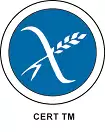The following was a post from Merete Askim regarding the avoidance of the contamination of foods during the manufacturing process. If you have any questions regarding it, direct them to him at: Open Original Shared Link.
My name is Merete Askim, and I am a College Lecturer at the Department of Food Science, Soer-Tronedelag College, Trondheim, Norway. In my teaching in nutrition and food chemistry, I am very interested in food allergy and intolerance. My students get jobs as food technologists, so it is important for them to be aware of food allergy and intolerance.
Celiac.com Sponsor (A12):
I have invented a new concept which I call ALLERGY-HYGIENICS.
This combines both the aspects of avoiding contamination by:
- Harmful Bacteria
- Ingredients Not Meant to be Part of the Food in Question
A traditional concept in industrial food production is called HACCP (Hazard Analysis Critical Points), which is concerned primarily with bacterial contamination. My new concept ALLERGY-HYGIENIC improves upon HACCP, by adding the concept of consideration of allergic and intolerant ingredients, either directly through insufficient consideration of the impact of an ingredient on the population, or inadvertently through contamination by ingredients not meant to be part of the food in question.
We teach the students to start the analysis of food production with the least complex product, and end with the most complex, to have knowledge of every ingredient, down to the smallest, including the food-additives.
For example, some firms use vacuum tubes to deliver ingredients from storage facilities to their production machinery. If a gluten free product is being made, and the tube used to deliver rice flour was previously used to deliver wheat flour, there is likely cross-contamination which cannot be removed by simply cleaning the final production machinery. The tube itself would have to be cleaned out, or the facility would have to be designed so that gluten free flours are never transported in tubes which at other times contain gluten.
Another example is when a dairy produces both "strawberry-yogurt" and "raspberry -yogurt" on the same day, the ALLERGY-HYGIENIC concept is to avoid any strawberry contamination in the raspberry product, or vice versa.
Our goal is that all products will eventually have ALLERGY-HYGIENIC qualities!
But we know this takes time and can be expensive in some occasions. It is a new concept in the traditional way of hygienic thinking. Even with ALLERGY-HYGIENICS, we can not guarantee no contamination, but we are attentive, and take our precautions.
At our Department of Food Science, Trondheim, Norway, want this new concept ALLERGY-HYGIENIC to catch-on all over the world, and become common knowledge. So please tell others, and if you dont mind, remember that it was created here.
When you are in contact with the food-industry, you might ask them:
- Is your production in accordance with ALLERGY-HYGIENIC principles?
- Have you taken ALLERGY-HYGIENIC considerations in your production?
If you find this concept useful, please let me know by private email. I would also be interested in your experiences as Celiacs with locating cross-contamination in foods. By cataloging your real-life experiences in the field, I can help my students and their companies determine likely problematic areas in food production.
Merete Askim: Tel (work): 47 73 91 96 25
N-7004 Trondheim, Norway






.thumb.jpg.d8ccdbb71dd5d276bacf435aa9f4427d.jpg)

Recommended Comments
There are no comments to display.